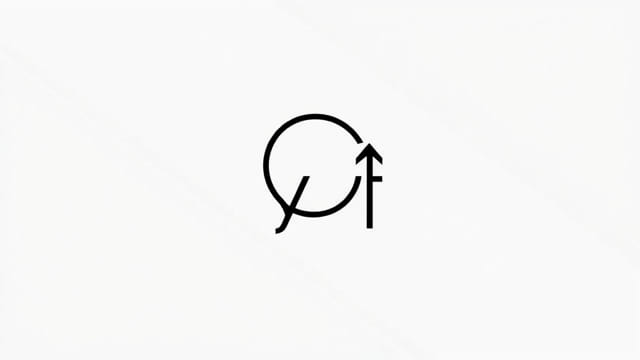The word yet may seem small and simple, but it carries significant meaning and plays multiple roles in the English language. Whether used in a sentence to indicate time, contrast, or possibility, yet adds depth and clarity to communication. Understanding the different uses and meanings of yet can help learners and fluent speakers alike improve their English skills. It appears in both spoken and written English frequently and can change the tone or implication of a sentence. Exploring how yet functions in various contexts reveals just how flexible and important this word truly is.
The Core Meaning of ‘Yet’
At its most basic level, the word yet refers to something that has not happened up to the present moment but is expected or possible in the future. It often appears in negative sentences or questions, indicating that something is incomplete or pending. For example:
- I haven’t finished my homeworkyet.
- Have they called youyet?
In these examples, yet adds the idea that the action may still happen. It shows anticipation or possibility without stating finality. This temporal use is one of the most common and foundational meanings of the word.
Using ‘Yet’ as an Adverb
When yet functions as an adverb, it usually deals with time or the progression of events. It is typically placed at the end of a sentence or question. Some common patterns include:
1. In Negative Sentences
In negative statements, yet implies that something hasn’t occurred up to the current moment, but it might still happen.
- They haven’t respondedyet.
- She hasn’t arrivedyet.
This use suggests incompleteness or delay, but not impossibility. The action is still possible in the near future.
2. In Interrogative Sentences
In questions, yet asks whether something has happened by now. It carries an expectation that the action might have occurred.
- Has the package been deliveredyet?
- Did he send the emailyet?
The use of yet in questions subtly hints that the speaker is waiting or expecting an event or result.
3. In Affirmative Sentences (Less Common)
Though less frequent, yet can appear in positive sentences, often for literary or formal effect.
- The night was young, andyetthe streets were quiet.
- The team had lost hope,yetthey kept trying.
Here, yet takes on a different meaning it implies contrast rather than time. This leads us to its use as a conjunction.
Using ‘Yet’ as a Conjunction
Besides its role as an adverb, yet is also a coordinating conjunction, similar to but. In this case, it links two ideas, often showing contrast or surprise.
Contrasting Two Ideas
When used to contrast, yet joins two clauses or thoughts where the second clause is unexpected based on the first.
- He is allergic to cats,yethe owns three of them.
- It was raining,yetthey continued their hike.
This usage highlights contradiction or irony, giving the sentence a more expressive tone. It’s often used in storytelling or persuasive writing to emphasize tension or conflict.
Yet vs. Other Similar Words
Many English learners confuse yet with similar words like still, already, and but. Understanding the difference can clarify how and when to use yet.
Yet vs. Still
- Yetrefers to something expected to happen (usually negative): She hasn’t calledyet.
- Stillsuggests that something is continuing: Shestillhasn’t called.
Though similar in meaning, still emphasizes ongoing delay, while yet points to potential future completion.
Yet vs. Already
- Alreadyimplies something has happened earlier than expected: He’salreadygone.
- Yetshows something hasn’t happened but might: He hasn’t goneyet.
These two words are often opposites. One shows early action; the other shows delayed or pending action.
Yet vs. But
- Butis a general conjunction showing contrast: She is tired,butshe will help.
- Yetalso shows contrast but with more subtlety or literary tone: She is tired,yetshe will help.
Both can be used to express contrast, but yet often adds a sense of surprise or depth.
Common Expressions with ‘Yet’
There are several fixed expressions and idiomatic uses of yet in English that learners should be familiar with:
- As yet– Meaning until now: As yet, there is no solution.
- Yet again– Repeating an action or event: He was late yet again.
- Better yet– Suggesting an improved alternative: Let’s go to the park or better yet, the beach.
- The best is yet to come– A hopeful phrase indicating future improvement: Don’t worry, the best is yet to come.
These phrases show how yet enriches the language with layered meanings, from hope to repetition or improvement.
Learning to Use ‘Yet’ Effectively
For those learning English, mastering the word yet can open up more natural, expressive ways to speak and write. Here are some practical tips:
- Pay attention to sentence structure yet usually follows the verb in negative sentences.
- Practice using yet in both questions and statements to get comfortable with its placement.
- Listen for yet in everyday conversations, songs, and movies it appears more often than you might expect.
- Use yet in your own writing to add contrast, expectation, or surprise.
Though short, the word carries power. Using it well can make your communication clearer and more engaging.
The Versatile Meaning of ‘Yet’
Yet is a small word with big impact. Its primary use relates to time, showing that something hasn’t happened but might. As a conjunction, it expresses contrast or contradiction. In phrases and idioms, it conveys repetition, optimism, or improvement. Whether you’re just beginning to study English or refining your fluency, understanding the meaning of yet is essential. It adds nuance, creates smoother transitions in conversation, and enriches your ability to express thoughts clearly and naturally. Mastering its usage will bring you closer to sounding like a native speaker and understanding the finer points of English communication.
